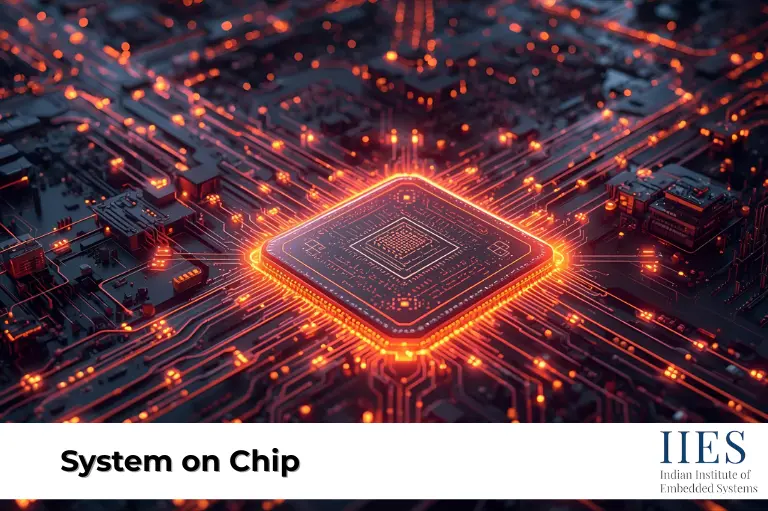
In today’s digital world, System on Chip (SoC) is the hidden engine that powers our favorite devices. From smartphones and tablets to IoT gadgets and smart cars, SoCs make everything smaller, faster, and more efficient. This guide explains SoCs in the simplest way possible for students and beginners.
A SoC chip is a single microchip that combines CPU, GPU, memory, and connectivity modules, enabling powerful, compact, and energy-efficient devices across industries.
At its core, a SoC system on chip is like a complete computer built into a single chip. Unlike traditional setups where the CPU, memory, and graphics are all separate, SoCs bring everything together.
Why it matters:
This is why your smartphone can stream HD videos, run games, and track your fitness—all while fitting in your pocket.
Not too long ago, electronics used separate chips for every function. A processor handled computing, another chip managed memory, and others worked for graphics or connectivity. This made devices bulky and power-hungry.
With advances in system on chip architecture, engineers began merging everything into a single chip. This shift made devices:
This evolution is why today’s smartphones are more powerful than desktop computers from a decade ago.
SoCs, microcontrollers, and microprocessors may sound similar but they serve very different roles in electronics. Understanding their differences helps in choosing the right technology.
SoCs combine the flexibility of processors with the simplicity of controllers—making them a versatile solution. This makes the system on chip vs microcontroller debate important in device design.
Every system on chip component works together like organs in a body. Each part has a role that makes devices efficient and powerful.
The real magic: All these parts are integrated into a single silicon die, making the system seamless and efficient.
From the phone in your pocket to the car you drive, SoCs silently power modern devices. They have become the backbone of smart living and connected technology.
These are real-world system on chip applications that show their impact. A common system on chip example is the Snapdragon series found in most Android smartphones.
The advantages of SoCs go far beyond size. They deliver efficiency, performance, and cost savings, making them essential for today’s digital devices.
Even with their strengths, SoCs face issues like heat, complexity, and scalability. These challenges shape the design and innovation of future chips.
Understanding these challenges helps both developers and consumers set realistic expectations.
Not all SoCs are built the same. Different industries require specialized designs. These types of system on chip balance power, efficiency, and cost.
The global SoC market is driven by a handful of major companies. These industry leaders set the pace of innovation and define future trends in chip design.
With rapid growth in AI, 5G, and IoT, SoCs are evolving faster than ever. Emerging trends are shaping how devices perform and connect in the digital world.
In the future, SoCs may even integrate quantum computing elements and neuromorphic designs for brain-like processing.
Picking the right SoC depends on performance, efficiency, and budget. Knowing the basics makes it easier to select the best chip for your project or device.
For example, if you’re building a smart home project, an IoT system on chip may be perfect. But if you’re gaming on a flagship phone, you’ll need a Snapdragon 8 Gen series.

System on Chip (SoC) is the backbone of today’s digital revolution. By combining multiple functions into a single chip, it powers everything from phones to cars with efficiency and intelligence. As technology advances, SoCs will continue shaping smarter, faster, and more connected devices worldwide.
A SoC integrates CPU, GPU, memory, and connectivity in one chip, while a microcontroller handles simple tasks, and a microprocessor powers PCs with general-purpose computing.
Smartphones, tablets, smartwatches, IoT devices, and cars all use SoCs for performance and efficiency.
Yes, SoCs are designed with optimized architectures that consume less power, making them ideal for mobile and portable devices.
No, SoCs are integrated designs and cannot be upgraded like desktop CPUs.
Yes, because fewer separate components are required, manufacturing costs are significantly reduced.
Consider performance, power consumption, connectivity options, and budget before selecting the ideal SoC.
Indian Institute of Embedded Systems – IIES